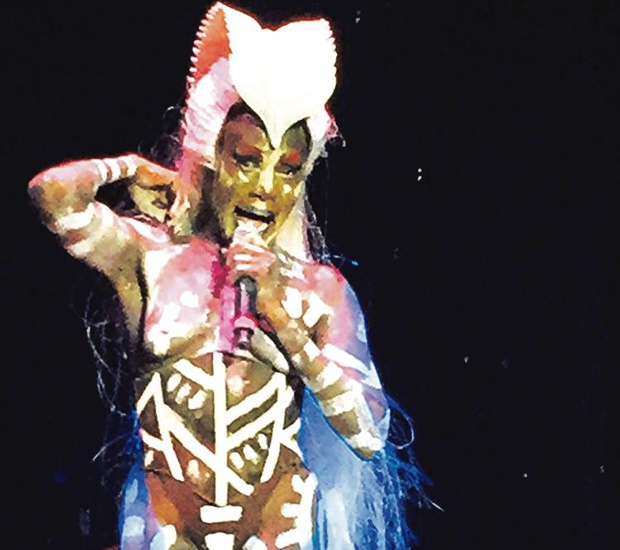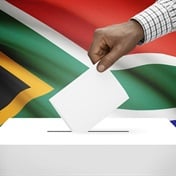
I had heard of Afropunk before, but I didn’t pay much attention. Then I saw the tweets this year. I saw the images. And then I looked at the line-up. But I still didn’t pay much attention – until someone mentioned Grace Jones.
Then I sat up and got my Afropunk tickets.
Thing is, Grace Jones evokes something indescribably powerful. From her songs La Vie En Rose to Private Life, her music wraps you in a cocoon of black magic. And she’s the high priestess of funk. Of a deep funk that melds dub, cabaret, disco, rock and psychedelic voodoo.
If you’ve seen James Brown, Prince, Busi Mhlongo, Janelle Monáe and Mfaz’ Omnyama, you know that rock is black. Like punk.
If you saw the movie Cadillac Records, it was a reminder that this has always been our music and our style. Chuck Berry, Etta James, Muddy Waters, Howlin’ Wolf. They were there at the beginning of rock’n’roll, creating this pulsating style of music and bringing an electric energy to the urban song.
At a time when the politics of identity is again receiving global attention, Afropunk holds a key to some of these issues.
Rock and punk often appear to have come from the Rolling Stones or the Beach Boys, tracing their path through Elvis Presley. But it had its owners, those who moulded it out of the confluence of the blues and church songs. Borrowing from the urgent energy of the city, it came with the showmanship of its inventors. So that as the new music was arriving, it came dressed in garb that challenged gender stereotypes.
So there was nothing else to do but get ready to go to Afropunk. We flew from Johannesburg to New York on the morning of the festival. We took the subway to Brooklyn and walked to Commodore Barry Park.
The 15-minute walk from the York Street station to the park was a splash of colour. Of style and glorious attitude walking with what the young call swag. Lots of it. Swaying to the rhythm of the music on their iPods and phones.
When you arrive at an event, a long queue is normally a big turn-off. But at Afropunk, it was no ordinary queue. This was a study on just how funky black people are. At a time when everyone seems to wear the same things bought from the same shops, here was a space of difference. It was as if those who had come to Afropunk had got a memo saying: “Be different, be inspired, be yourself.”
This was the kind of space where Jimi Hendrix’s spirit was floating in the sartorial air everyone was breathing. As I glanced around, there were glimpses of Nina Simone and Miriam Makeba invoked in a dashiki that shone in the afternoon light.
As a photographer, I was tempted to whip out my camera to capture this explosion of colour. Brilliant maroons. Velvets. Ankara. Adire. Wax Hollandais. Rich black. Canary yellow. Deep blue. Hot red.
And always the hair. Then the jewellery – from beaded neckpieces to big, bold metallic earrings, nose rings, belly rings, everywhere rings. And body art.
The studded jeans and belts were standard fare. So were the flowing gowns and stylish caps that seemed to herald the rebirth of cool. And of course, Afropunk was tattoo central. The drawings sitting on a melanin-rich canvas that seemed to utter one united yell of self-love.
But I left the camera in my bag. I just wanted to take this all in and know this was not just a festival, but a moment of self-definition. Of reclamation. Of saying rock’n’roll has always been ours. Punk too.
Against the backdrop of a gentrification that has sapped much of the energy of Brooklyn, and replaced it with the insipid symbols of High Street America, it was wonderful to see young guns selling T-shirts you will not see at the big chain stores.
At a time when the images of people rely so heavily on what they see reflected of themselves in the media, there was something decidedly anti-establishment in how people at Afropunk represented themselves.
Anyone who has seen Omnyama on stage playing his guitar in impossible positions and dressed as if he was going to a punk summit would know that our people have always been more than the stereotypes we see on TV and in print.
Nor was Omnyama creating a look out of nowhere. Visit the photographic archives and you will see the big earrings, the parted hair, the neckpieces. What today looks like youthful defiance is a reconnection with a style that has long been there.
There were a number of stages inside the park. And plenty of ground for the thousands to spread their blankets on and sit back to catch the musicians.
There was Kelis, big hair and all, spreading love as the sun set. After her came Lauryn Hill in a crisp white suit and big earrings. She sat on a sofa as she plucked the guitar and railed against the sound engineers.
And then there was Grace Jones. Lithe, sinuous and irresistible as she changed from one costume to another. Her songs weren’t songs in the traditional sense, but fully contained dramas enacted on the stage to her sultry voice. Jones doesn’t just perform, she doesn’t just sing; she casts a spell on you.
The weather was equally brilliant on the second day of Afropunk. The music was loud, the crowds were ecstatic and the trends were just as fascinating. Even the familiar dashikis acquired a renewed verve in this setting. I was tempted to hug everyone I met and say: “Ah, but my people are beautiful.”
Lenny Kravitz was the closing act of the festival. Clad in trademark tight leather jeans, a nose stud and a loose-fitting vest, he was every bit the rock punk figure he’s been since his arrival on the music scene.
There was an explosive energy in his performance, as there was the intimacy that comes from playing so close to the place of your birth. On the guitar, his ideas were fresh and urgent, a cross between Prince and Hendrix.
I was glad I made the trip from Johannesburg to Brooklyn. Afropunk was definitely one of those moments worth travelling across the oceans to catch.
Whether it was SZA, Kelis or Hill, their performances captured and reflected the contradictory impulses of Afropunk.
Social media has made it easy to connect across the usual divides and the hashtags for #Afropunk2015 showed just how much platforms like Instagram and Twitter can bring together those with shared interests.
As Joburg finds its cultural voice again – jazz, mbaqanga, hip-hop and rap flow from its veins – it is important to consider the example of Afropunk.
Perhaps the last word should go to Mimi Selemela who said: “Afropunk in Brooklyn epitomised to me just how magical black culture is. It was what happiness looks like.”
Dlamini is an independent corporate communications consultant, writer and photographer




 Publications
Publications
 Partners
Partners









